The wearable tech giving sports teams winning ways
- Published
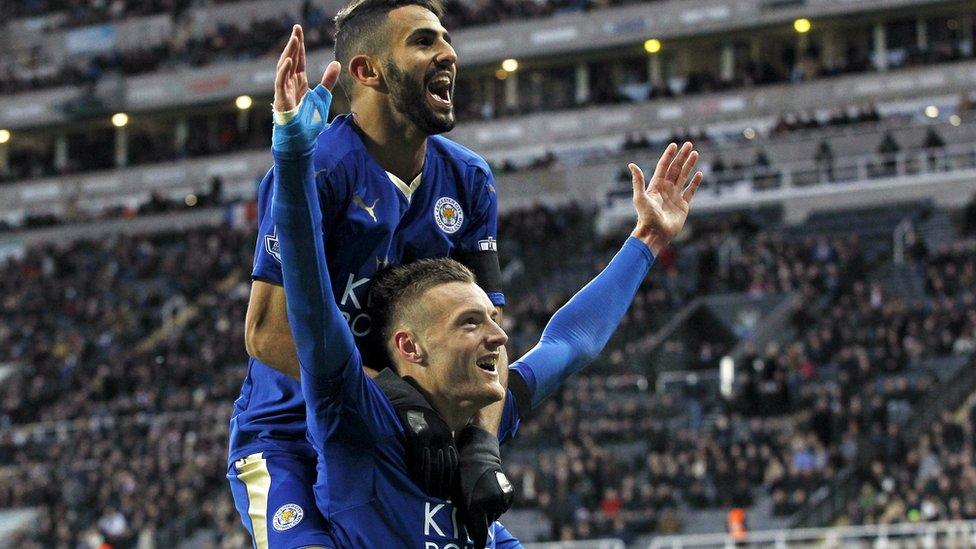
Has wearable tech and cloud analytics helped Leicester stay top of the English Premier League?
Wearable technology is playing a growing role in sport all over the world, from the UK's football Premier League, worth more than £5bn ($7.1bn; €6.3bn) in global TV rights alone, to Aussie Rules Football, the first to pioneer the use of location-tracking GPS devices in 2004.
Analysis of data transmitted to the cloud from increasingly sophisticated sensors is helping teams keep their players at the peak of physical fitness.
Leicester City Football Club, for example - currently clinging to the English Premier League's top slot against all odds - has also had the fewest injured players over the season, a fact that may have a lot to do with the club's clever use of technology.
Players wear Catapult Sport's OptimEye S5 device, which collects data relating to acceleration, direction, position and, crucially, the impact of collisions. These sensors can collect 800-900 data points per second.
Scott Drawer, formerly Rugby Football Union's performance manager and now with cycling's Team Sky, says: "It may be that they have been using the data in a much smarter way to rest, rotate and recover players appropriately.
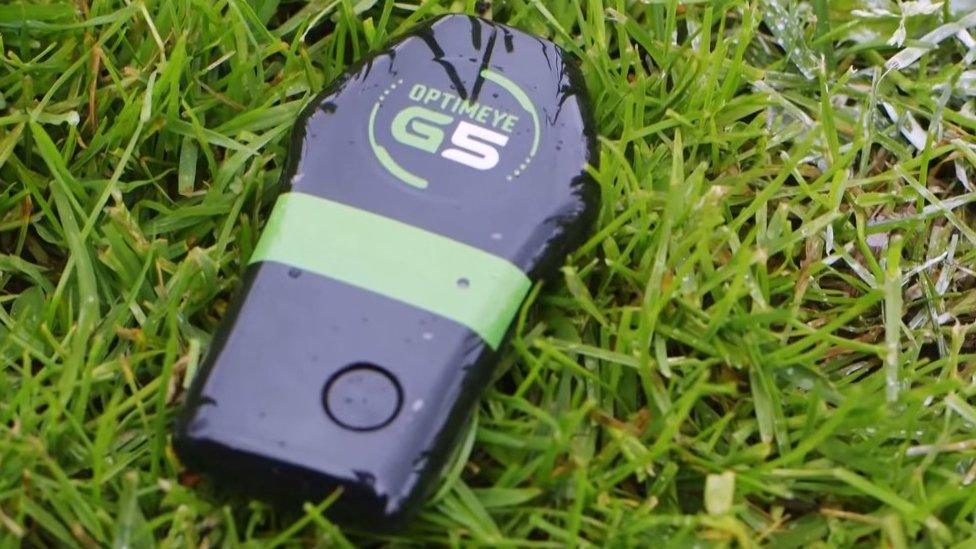
Catapult has also produced a sensor tailored for goalkeepers
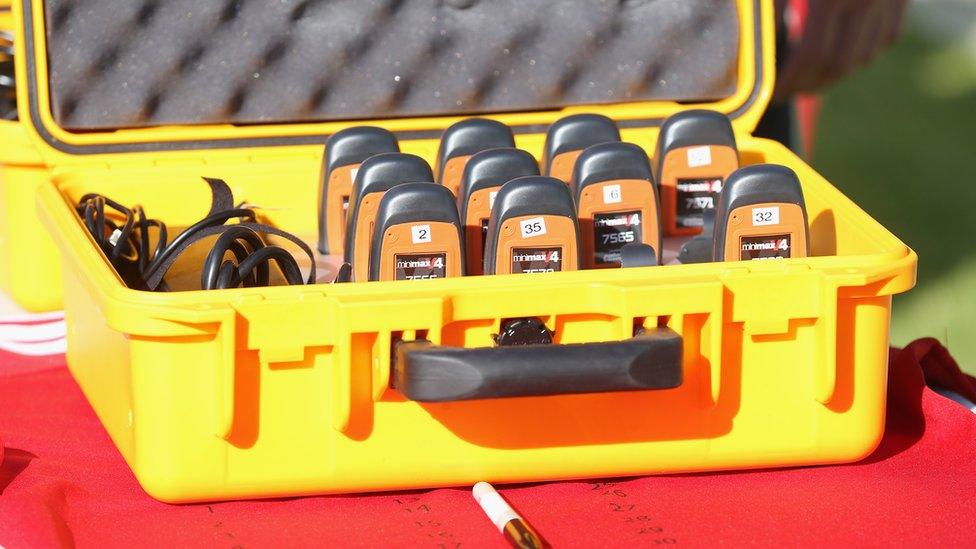
Players wear their own personalised trackers during training and live games
"Fundamentally, they are able to have their best players available a lot more, so there is no doubt some of their processes are helping them to do that."
Rival club Southampton FC makes its players wear GPS units during training, and Alek Gross, the club's head of sports science, says players have experienced fewer soft tissue and overuse injuries since introducing the tech.
And Richard Byrne, business administrator at StatSports, another tracking device manufacturer, says: "One of our biggest European clients recently reported having only 20 muscular injuries last season once they started using [wearable] technology, compared to 44 the previous season," he says.
Scrum down
Rugby has also been a big convert to this type of analysis.
Every club in UK rugby union's Aviva Premiership - and a number of international sides - has adopted the tech, with players wearing GPS units between their shoulder blades to measure speed and distance covered while training and playing.

All teams in rugby union's Aviva Premiership have embraced wearable tech
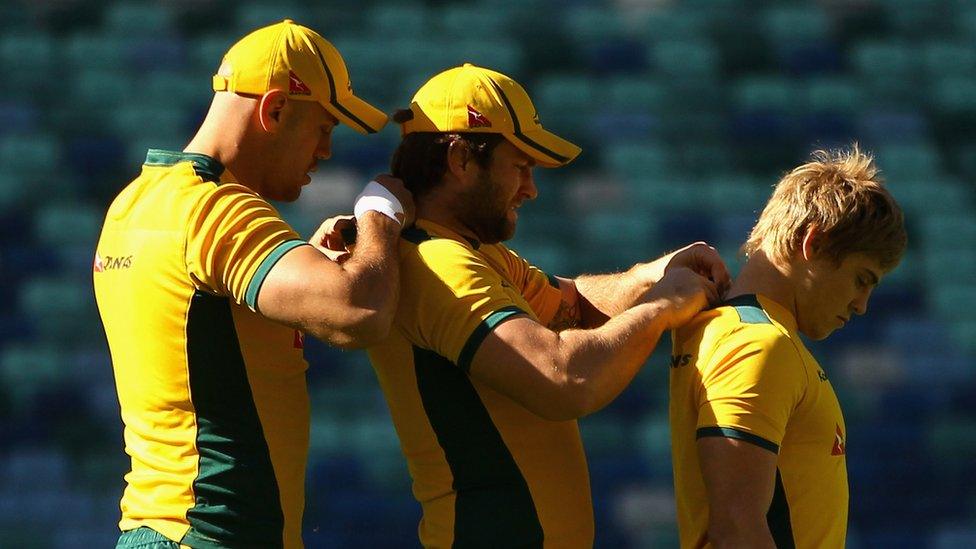
Australia's Wallabies rugby players fix tracking devices to each other
"Heavier rugby players often find that if they run over a certain distance in a week they can inflame an Achilles [tendon], so some want to spend more time off their feet to maintain fitness and minimise injury risk," explains Corin Palmer, head of rugby operations for Premiership Rugby.
"Wearable technology is able to monitor that load on a day-by-day basis to ensure those players are not just injury-free but in peak condition for competition," he adds.
When it comes to American football, NFL team the Cincinnati Bengals uses Viper Pods - monitoring devices made by StatSports - for GPS data collection during on-field training sessions.
Players also wear Polar heart rate monitors during conditioning sessions and circuit weight training, to monitor response to the training load.
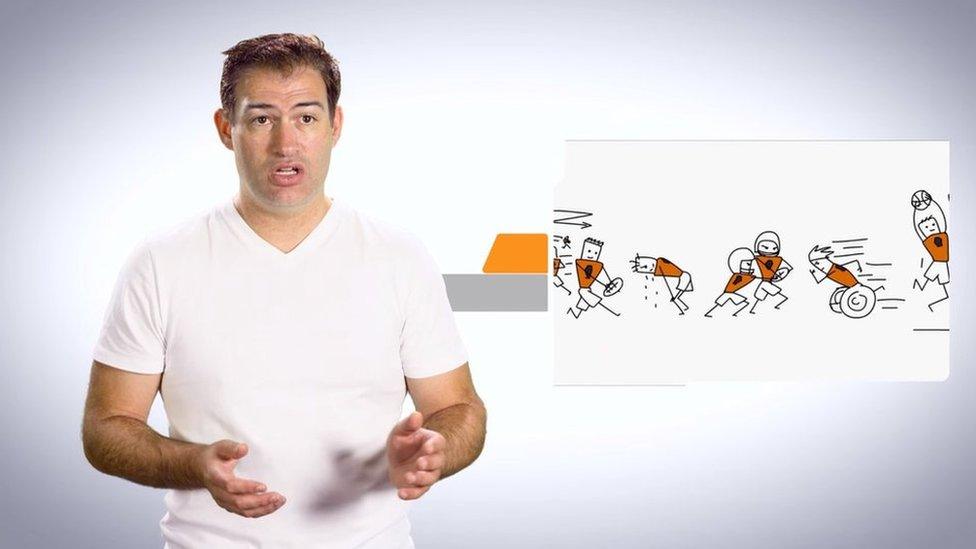
Catapult's Adir Shiffman says algorithms can measure the impact and velocity of tackles
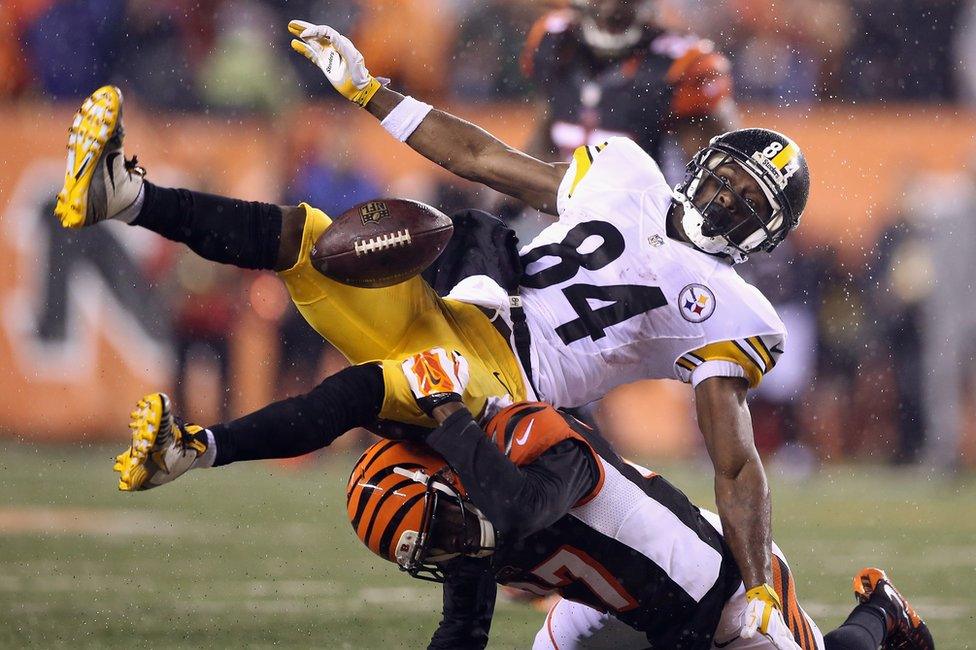
A Cincinatti Bengal player crunches into a Pittsburgh Steelers catcher
"Anytime you can quantify what you are doing, it allows you to see the results in concrete terms," says Chip Morton, the Bengals' strength and conditioning coach.
"Having the data from wearable technology has helped the head coach to make positive adjustments to our weekly practice schedule. The data can also alert us to the recovery and preparation needs of the individual athletes."
Data insights
But while wearable tech provides reams of data, it is what you do with it that counts.
Bill Gerrard, professor of business and sports analytics at Leeds University Business School, has worked with the Saracens rugby team and with baseball's Oakland Athletics, whose executive vice president of baseball operations, Billy Beane, was made famous in the film Moneyball.
Mr Gerrard believes the ultimate goal is to combine data from wearables with other data sets, such as tactical analysis of previous games and opponents' playing styles.
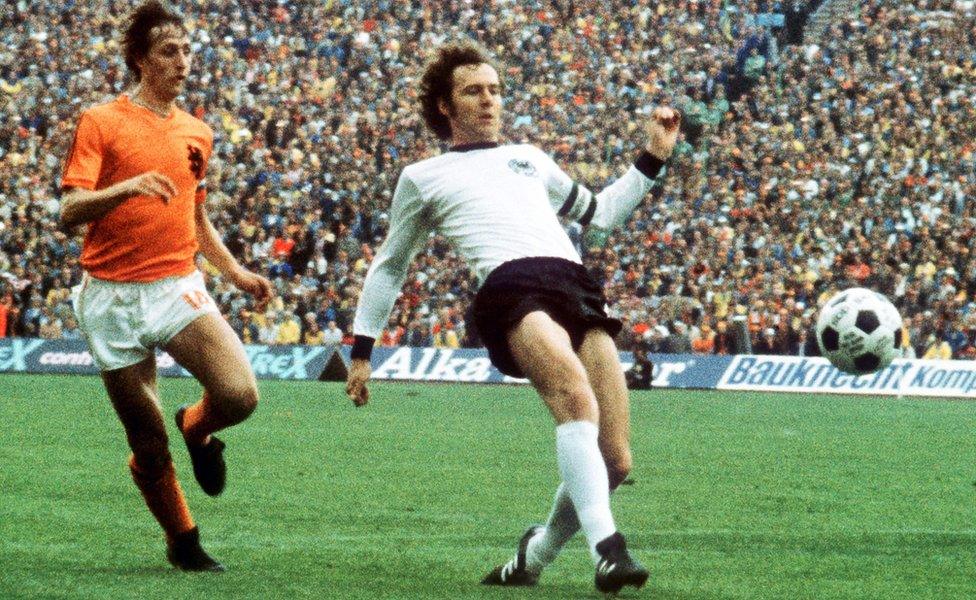
Would Franz Beckenbauer (right) or the late Johann Cruyff have benefited from data tracking?
"That is where the cutting edge is - pulling tactical and physical data together to optimise training workloads on an individual basis."
But can too much data mean you lose sight of the ball?
"Our greatest asset is that we coach players and not spreadsheets," Mr Gross reminds us. "If you don't understand the context in which the numbers were found, they don't mean an awful lot."
And it's not just about fitness, he suggests.
Revered football players like Bobby Moore and Franz Beckenbauer "read the game so incredibly well," he says, "they didn't need to sprint to get into position."
Too much, too little
But if you don't have that degree of natural ability - and you're a bit lazy, frankly - the data will catch you out.
Andrew Gray, physical performance manager at Australian rugby league club, Cronulla Sharks, says data gathered from wearable devices during training makes it easier to manage the under-training player.
"Providing these athletes with a clear picture of their performance at training compared with what is required in competition at the highest level can be a real eye-opener for them and helps them to gain a more complete understanding of what is required to perform at their best," he says.

Cronulla Sharks rugby league players celebrate, but are some under-training?
Southampton FC's Mr Gross observes that under-training increases the risk of injury.
"If a player hasn't hit a certain percentage of high speed runs during a given week, for example, they are more susceptible to a hamstring injury.
"The GPS data has been useful because when we individualise training programmes we can see if people drop below or above a certain point."
Coming to you, live
This kind of data is also used real-time analysis during matches by some Premiership and international rugby teams, including England and Ireland, helping to inform their decisions about when to make changes.
"You can see the coaches with laptops in the stands; they have a constant live feed on each player, their fatigue index, collision load, distance covered et cetera," says Mr Byrne.

Pitchside coaches can monitor performance data in real time
"This can allow them to make in-game decisions regarding substitutions or injuries."
Premiership football teams are also now allowed to use wearable devices during games, although the data gathered can't be applied in real-time. Yet.
In this data-saturated age, sporting purists may take some comfort from the fact that natural born skill still matters.

Follow Matthew on Twitter here: @matthew_wall, external